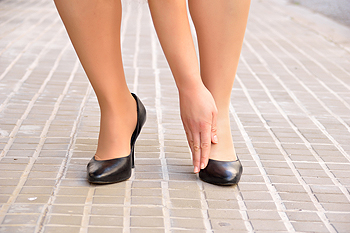 There are many women who enjoy wearing high heels despite knowing foot pain may develop from wearing these specific type of shoes. Research has shown that when the heel is high, the arch in the foot may become inflamed and this may typically cause pain and discomfort. If high heels are worn on a frequent basis, the toes may undergo stress, and this may possibly cause corns and calluses to develop. The likelihood of incurring a fall may increase as a result of the line of gravity being altered by the height of the heel. There are several ways to enjoy wearing high heels while keeping your feet as comfortable as possible. These may include slipping off your shoes at an appropriate time and performing gentle stretching exercises, including pointing, flexing and rolling your . Additionally, circulation in the feet may be increased by wiggling the toes. Your feet may benefit by wearing shoes that are more comfortable the following day, which may allow the foot muscles to rest. Please speak to a podiatrist if you would like additional information concerning the dangers of wearing high heels.
There are many women who enjoy wearing high heels despite knowing foot pain may develop from wearing these specific type of shoes. Research has shown that when the heel is high, the arch in the foot may become inflamed and this may typically cause pain and discomfort. If high heels are worn on a frequent basis, the toes may undergo stress, and this may possibly cause corns and calluses to develop. The likelihood of incurring a fall may increase as a result of the line of gravity being altered by the height of the heel. There are several ways to enjoy wearing high heels while keeping your feet as comfortable as possible. These may include slipping off your shoes at an appropriate time and performing gentle stretching exercises, including pointing, flexing and rolling your . Additionally, circulation in the feet may be increased by wiggling the toes. Your feet may benefit by wearing shoes that are more comfortable the following day, which may allow the foot muscles to rest. Please speak to a podiatrist if you would like additional information concerning the dangers of wearing high heels.
High heels have a history of causing foot problems. If you have any concerns about your feet or , contact Brent Harwood, DPM from Southeast Podiatry. Our doctor can provide the care you need to keep you pain-free and on your feet.
Effects of High Heels on the Feet
High heels are popular shoes among women because of their many styles and societal appeal. Despite this, high heels can still cause many health problems if worn too frequently.
Which Parts of My Body Will Be Affected by High Heels?
What Kinds of Foot Problems Can Develop from Wearing High Heels?
How Can I Still Wear High Heels and Maintain Foot Health?
If you want to wear high heeled shoes, make sure that you are not wearing them every day, as this will help prevent long term physical problems. Try wearing thicker heels as opposed to stilettos to distribute weight more evenly across the feet. Always make sure you are wearing the proper shoes for the right occasion, such as sneakers for exercising. If you walk to work, try carrying your heels with you and changing into them once you arrive at work. Adding inserts to your heels can help cushion your feet and absorb shock. Full foot inserts or metatarsal pads are available.
If you have any questions please feel free to contact one of our offices located in Fairhope, Brewton, and Atmore, AL . We offer the newest diagnostic and treatment technologies for all your foot care needs.
Read more about Effect of High Heels on the Feet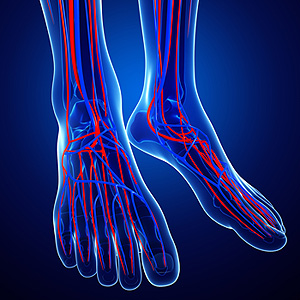 The medical condition referred to as poor circulation is a result of restricted blood movement through the vessels. This generally occurs when the arteries are blocked, and the blood has difficulty flowing through the body. General causes for this condition to develop may include indulging in unhealthy lifestyle habits such as smoking, lack of exercise, or being overweight. Research has shown that medical conditions may play a significant role in developing poor circulation, including high blood pressure, having diabetes, or Raynaud’s syndrome. The latter condition will cause the feet to turn white while exposed to cold temperatures. There are known to be several symptoms associated with poor circulation, which may include cramping in the legs and feet, experiencing a tingling or numbing sensation, or having cold feet. If you have any of the above symptoms, it’s suggested to speak with a podiatrist, so a proper diagnosis can be performed.
The medical condition referred to as poor circulation is a result of restricted blood movement through the vessels. This generally occurs when the arteries are blocked, and the blood has difficulty flowing through the body. General causes for this condition to develop may include indulging in unhealthy lifestyle habits such as smoking, lack of exercise, or being overweight. Research has shown that medical conditions may play a significant role in developing poor circulation, including high blood pressure, having diabetes, or Raynaud’s syndrome. The latter condition will cause the feet to turn white while exposed to cold temperatures. There are known to be several symptoms associated with poor circulation, which may include cramping in the legs and feet, experiencing a tingling or numbing sensation, or having cold feet. If you have any of the above symptoms, it’s suggested to speak with a podiatrist, so a proper diagnosis can be performed.
While poor circulation itself isn’t a condition; it is a symptom of another underlying health condition you may have. If you have any concerns with poor circulation in your feet contact Brent Harwood, DPM of Southeast Podiatry. Our doctor will treat your foot care needs.
Poor Circulation in the Feet
Peripheral artery disease (PAD) can potentially lead to poor circulation in the lower extremities. PAD is a condition that causes the blood vessels and arteries to narrow. In a linked condition called atherosclerosis, the arteries stiffen up due to a buildup of plaque in the arteries and blood vessels. These two conditions can cause a decrease in the amount of blood that flows to your extremities, therefore resulting in pain.
Symptoms
Some of the most common symptoms of poor circulation are:
Treatment for poor circulation often depends on the underlying condition that causes it. Methods for treatment may include insulin for diabetes, special exercise programs, surgery for varicose veins, or compression socks for swollen legs.
As always, see a podiatrist as he or she will assist in finding a regimen that suits you. A podiatrist can also prescribe you any needed medication.
If you have any questions, please feel free to contact one of our offices located in Fairhope, Brewton, and Atmore, AL . We offer the newest diagnostic and treatment technologies for all your foot care needs.
Read more about Causes Symptoms and Treatment for Poor Circulation in the Feet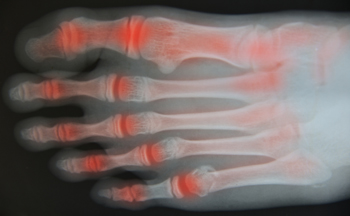 One of the most common types of arthritis is referred to as rheumatoid arthritis. Many people may experience symptoms of this condition in the feet and are aware of the pain and discomfort that typically exists with this ailment. There are specific symptoms that may accompany this type of arthritis, including swelling and soreness in the feet, difficulty waking, which may be a result of unstable joints, or the foot possibly changing shape. Research has shown the part of the foot that may be affected the most are the toes, which consist of smaller joints. They may begin to look deformed and may have difficulty in moving or bending. There may be additional foot conditions that may arise including the development of corns and calluses. This may be a result of changes in the foot shape. If you are afflicted with rheumatoid arthritis, it is suggested to consult with a podiatrist who can offer proper treatment techniques.
One of the most common types of arthritis is referred to as rheumatoid arthritis. Many people may experience symptoms of this condition in the feet and are aware of the pain and discomfort that typically exists with this ailment. There are specific symptoms that may accompany this type of arthritis, including swelling and soreness in the feet, difficulty waking, which may be a result of unstable joints, or the foot possibly changing shape. Research has shown the part of the foot that may be affected the most are the toes, which consist of smaller joints. They may begin to look deformed and may have difficulty in moving or bending. There may be additional foot conditions that may arise including the development of corns and calluses. This may be a result of changes in the foot shape. If you are afflicted with rheumatoid arthritis, it is suggested to consult with a podiatrist who can offer proper treatment techniques.
Because RA affects more than just your joints, including the joints in your Feet, it is important to seek early diagnosis from your podiatrist if you feel like the pain in your feet might be caused by RA. For more information, contact Brent Harwood, DPM of Southeast Podiatry. Our doctor will assist you with all of your podiatric concerns.
What Is Rheumatoid Arthritis?
Rheumatoid Arthritis (RA) is an autoimmune disorder in which the body’s own immune system attacks the membranes surrounding the joints. Inflammation of the lining and eventually the destruction of the joint’s cartilage and bone occur, causing severe pain and immobility.
Rheumatoid Arthritis of the Feet
Although RA usually attacks multiple bones and joints throughout the entire body, almost 90 percent of cases result in pain in the foot area.
Symptoms
Diagnosis
Quick diagnosis of RA in the feet is important so that the podiatrist can treat the area effectively. Your doctor will ask you about your medical history, occupation, and lifestyle to determine the origin of the condition. Rheumatoid Factor tests help to determine if someone is affected by the disease.
If you have any questions please feel free to contact one of our offices located in Fairhope, Brewton, and Atmore, AL . We offer the newest diagnostic and treatment technologies for all your foot care needs.
Read more about Rheumatoid Arthritis in the Feet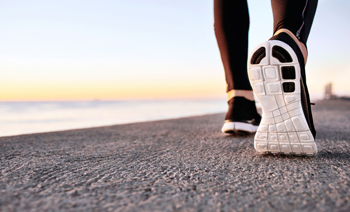 Research has shown that wearing shoes that fit properly may aid in preventing uncomfortable foot conditions from developing. Ingrown toenails may occur if the shoes that are worn fit too tightly, possibly causing the toenails to grow into the skin. It’s important to have your feet measured before purchasing shoes, and it may be beneficial to do this at the end of the day when the feet are typically at their largest. The shoe may feel comfortable when the ball of the foot fits properly in the widest portion of the shoe and there is adequate room for the longest toe to move about in. Many people make the mistake of expecting the shoes to stretch and become broken in as they are worn, and this may produce foot conditions such as corns or blisters. Please consult with a podiatrist for additional information about what to look for when buying shoes.
Research has shown that wearing shoes that fit properly may aid in preventing uncomfortable foot conditions from developing. Ingrown toenails may occur if the shoes that are worn fit too tightly, possibly causing the toenails to grow into the skin. It’s important to have your feet measured before purchasing shoes, and it may be beneficial to do this at the end of the day when the feet are typically at their largest. The shoe may feel comfortable when the ball of the foot fits properly in the widest portion of the shoe and there is adequate room for the longest toe to move about in. Many people make the mistake of expecting the shoes to stretch and become broken in as they are worn, and this may produce foot conditions such as corns or blisters. Please consult with a podiatrist for additional information about what to look for when buying shoes.
It is important to find shoes that fit you properly in order to avoid a variety of different foot problems. For more information about treatment, contact Brent Harwood, DPM from Southeast Podiatry. Our doctor will treat your foot care needs.
Proper Shoe Fitting
Shoes have many different functions. They cushion our body weight, protect our feet, and allow us to safely play sports. You should always make sure that the shoes you wear fit you properly in order to avoid injuries and deformities such as: bunions, corns, calluses, hammertoes, plantar fasciitis, stress fractures, and more. It is important to note that although a certain pair of shoes might be a great fit for someone else, that doesn’t mean they will be a great fit for you. This is why you should always try on shoes before buying them to make sure they are worth the investment. Typically, shoes need to be replaced ever six months to one year of regular use.
Tips for Proper Shoe Fitting
The shoes you buy should always feel as good as they look. Shoes that fit properly will last longer, feel better, and improve your way of life each day.
If you have any questions, please feel free to contact one of our offices located in Fairhope, Brewton, and Atmore, AL . We offer the newest diagnostic and treatment technologies for all your foot care needs.
Read more about How to Get a Proper Shoe Fit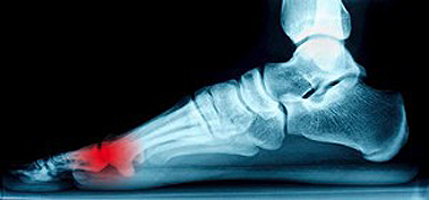 The bones that are found surrounding the joints in the foot are referred to as sesamoid bones. Research has confirmed the big toe contains different types of these particular bones and they have specific functions, which includes providing stability while walking. If an injury should occur to one or more of these bones, inflammation is likely to develop and this typically results in severe pain and discomfort. This is referred to as sesamoiditis, and generally occurs from repetitive activity that may be associated with dancing, basketball, or tennis. Patients who experience this condition often notice gradual pain developing in the foot, in addition to swelling and tenderness surrounding the affected joint. The first phase of treatment will often include rest and cessation from the activity that has caused this ailment. It’s suggested to speak to a podiatrist if you are afflicted with sesamoiditis for further treatment options that are correct for you.
The bones that are found surrounding the joints in the foot are referred to as sesamoid bones. Research has confirmed the big toe contains different types of these particular bones and they have specific functions, which includes providing stability while walking. If an injury should occur to one or more of these bones, inflammation is likely to develop and this typically results in severe pain and discomfort. This is referred to as sesamoiditis, and generally occurs from repetitive activity that may be associated with dancing, basketball, or tennis. Patients who experience this condition often notice gradual pain developing in the foot, in addition to swelling and tenderness surrounding the affected joint. The first phase of treatment will often include rest and cessation from the activity that has caused this ailment. It’s suggested to speak to a podiatrist if you are afflicted with sesamoiditis for further treatment options that are correct for you.
Sesamoiditis is an unpleasant foot condition characterized by pain in the balls of the feet. If you think you’re struggling with sesamoiditis, contact Brent Harwood, DPM of Southeast Podiatry. Our doctor will treat your condition thoroughly and effectively.
Sesamoiditis
Sesamoiditis is a condition of the foot that affects the ball of the foot. It is more common in younger people than it is in older people. It can also occur with people who have begun a new exercise program, since their bodies are adjusting to the new physical regimen. Pain may also be caused by the inflammation of tendons surrounding the bones. It is important to seek treatment in its early stages because if you ignore the pain, this condition can lead to more serious problems such as severe irritation and bone fractures.
Causes of Sesamoiditis
Treatment for sesamoiditis is non-invasive and simple. Doctors may recommend a strict rest period where the patient forgoes most physical activity. This will help give the patient time to heal their feet through limited activity. For serious cases, it is best to speak with your doctor to determine a treatment option that will help your specific needs.
If you have any questions please feel free to contact one of our offices located in Fairhope, Brewton, and Atmore, AL . We offer the newest diagnostic and treatment technologies for all your foot care needs.
Read more about Sesamoiditis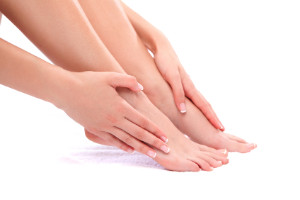 Many people are afflicted with several types of foot conditions, and these may be indicative of additional health issues that may be present in the body. Some people may experience muscle spasms and this may be a result of dehydration. If these spasms should occur while walking or running, it could be a symptom of a circulatory ailment. Additionally, a condition that is referred to as gout may be a result of excess uric acid that is present in the blood. Gout is a form of arthritis, which affects the big toe and typically produces extreme pain and discomfort. Patients who experience cold feet for the majority of the time may be aware that it may be a symptom of diabetes, thyroid concerns, or anemia. If you are experiencing any foot conditions, please consult with a podiatrist to learn how this may be a sign of other health issues.
Many people are afflicted with several types of foot conditions, and these may be indicative of additional health issues that may be present in the body. Some people may experience muscle spasms and this may be a result of dehydration. If these spasms should occur while walking or running, it could be a symptom of a circulatory ailment. Additionally, a condition that is referred to as gout may be a result of excess uric acid that is present in the blood. Gout is a form of arthritis, which affects the big toe and typically produces extreme pain and discomfort. Patients who experience cold feet for the majority of the time may be aware that it may be a symptom of diabetes, thyroid concerns, or anemia. If you are experiencing any foot conditions, please consult with a podiatrist to learn how this may be a sign of other health issues.
When dealing with systemic disease of the feet, it is extremely important to check the affected areas routinely so that any additional problems are caught quickly. If you have any concerns about your Feet contact Brent Harwood, DPM from Southeast Podiatry. Our doctor will assist you with all of your podiatric needs.
Systemic Diseases of the Feet
Systemic diseases affect the whole body, and symptoms usually are displayed in the feet. This condition can make a patient’s ability to walk unbearable. Systemic diseases include gout, diabetes mellitus, neurological disorders, and arthritis.
Gout – is caused by an excess of uric acid in the body. Common symptoms include pain, inflammation, and redness at the metatarsal/phalangeal joint of the base big toe. Gout can be treated by NSAIDs to relieve pain and inflammation, and other drugs that lower the acid levels in the body.
Diabetes mellitus – is an increase in the level of blood sugar that the body cannot counteract with its own insulin. Failure to produce enough insulin is a factor in Diabetes.
Diabetes of the Feet
Diabetic Neuropathy – may lead to damaged nerves and affect the feet through numbness and loss of sensation.
Peripheral Vascular Disease – can restrict the blood flow to the feet, and often times lead to amputation of the feet.
If you have any questions please feel free to contact one of our offices located in Fairhope, Brewton, and Atmore, AL . We offer the newest diagnostic and treatment technologies for all your foot care needs.
Read more about Systemic Diseases of the Foot When babies are born, many first-time parents do not pay particular attention to their babies feet other than to notice how cute they are. Most babies feet are extremely flexible, and are constructed of several bones and joints with additional support coming from the ligaments. Twelve months of age is typically when most children begin to walk, and flat-footedness is a common condition among these new walkers. As their walking skills develop, the muscle strength will improve and a normal arch will develop. Toddlers will benefit by walking barefoot indoors as often as possible, which will allow the sole of the foot to touch the floor. This will aid in strengthening the tendons and ligaments in addition to the muscles of the foot. When the proper time comes for your child to wear shoes, it’s important to have their feet correctly measured. Please consult with a podiatrist if you would like additional information on how to care for your children’s feet.
When babies are born, many first-time parents do not pay particular attention to their babies feet other than to notice how cute they are. Most babies feet are extremely flexible, and are constructed of several bones and joints with additional support coming from the ligaments. Twelve months of age is typically when most children begin to walk, and flat-footedness is a common condition among these new walkers. As their walking skills develop, the muscle strength will improve and a normal arch will develop. Toddlers will benefit by walking barefoot indoors as often as possible, which will allow the sole of the foot to touch the floor. This will aid in strengthening the tendons and ligaments in addition to the muscles of the foot. When the proper time comes for your child to wear shoes, it’s important to have their feet correctly measured. Please consult with a podiatrist if you would like additional information on how to care for your children’s feet.
The health of a child’s feet is vital to their overall well-being. If you have any questions regarding foot health, contact Brent Harwood, DPM of Southeast Podiatry. Our doctor can provide the care you need to keep you pain-free and on your feet.
Tips for Keeping Children's Feet Healthy
If you have any questions, please feel free to contact one of our offices located in Fairhope, Brewton, and Atmore, AL . We offer the newest diagnostic and treatment technologies for all your foot care needs.
Read more about How to Care for Your Child's Feet People who regularly stretch their feet and toes are more likely aware of the many benefits that may accompany these movements. These may include increased blood flow into the feet, the muscles in the sole of the feet being properly stretched, and possibly helping to balance flat feet or fallen arches. Many people may discover moderate relief from the tired sensation that is often felt in the and feet, in addition to any swelling that may be present. Flexibility is generally improved as a result of improved strength. There are effective foot and toe stretches that can be performed, including pointing and flexing the toes in one direction multiple times, then repeating in the other direction. Please consult with a podiatrist if you would like additional information about the benefits of stretching the feet and toes.
People who regularly stretch their feet and toes are more likely aware of the many benefits that may accompany these movements. These may include increased blood flow into the feet, the muscles in the sole of the feet being properly stretched, and possibly helping to balance flat feet or fallen arches. Many people may discover moderate relief from the tired sensation that is often felt in the and feet, in addition to any swelling that may be present. Flexibility is generally improved as a result of improved strength. There are effective foot and toe stretches that can be performed, including pointing and flexing the toes in one direction multiple times, then repeating in the other direction. Please consult with a podiatrist if you would like additional information about the benefits of stretching the feet and toes.
Stretching the feet is a great way to prevent injuries. If you have any concerns with your feet consult with Brent Harwood, DPM from Southeast Podiatry. Our doctor will assess your condition and provide you with quality foot treatment.
Stretching the Feet
Being the backbone of the body, the feet carry your entire weight and can easily become overexerted, causing cramps and pain. As with any body part, stretching your feet can serve many benefits. From increasing flexibility to even providing some pain relief, be sure to give your feet a stretch from time to time. This is especially important for athletes or anyone performing aerobic exercises, but anyone experiencing foot pain or is on their feet constantly should also engage in this practice.
Great ways to stretch your feet:
Individuals who tend to their feet by regular stretching every day should be able to minimize foot pain and prevent new problems from arising.
If you have any questions, please feel free to contact one of our offices located in Fairhope, Brewton, and Atmore, AL . We offer the newest diagnostic and treatment technologies for all your foot care needs.
Read more about Stretching Your Feet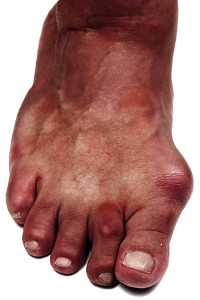 If you enjoy walking and exercising, the pain of a bunion may cause considerable interference in your enjoyment of these activities. They most commonly form at the base and side of the big toe, and could become worse by wearing shoes that do not fit properly. These types of shoes include those that have a narrow toe area, which does not have adequate room for the toes to move about in. When the bunion begins to form, the majority of shoes do not have ample room to accommodate the bony protrusion, and this may result in pain and stiffness emanating from the joint and surrounding areas. There are several ways to properly treat a bunion, and it typically begins with wearing the correct shoes that may eliminate painful pressure on the toe. If you feel you have developed a bunion, it’s suggested to consult with a podiatrist so the correct course of treatment can commence.
If you enjoy walking and exercising, the pain of a bunion may cause considerable interference in your enjoyment of these activities. They most commonly form at the base and side of the big toe, and could become worse by wearing shoes that do not fit properly. These types of shoes include those that have a narrow toe area, which does not have adequate room for the toes to move about in. When the bunion begins to form, the majority of shoes do not have ample room to accommodate the bony protrusion, and this may result in pain and stiffness emanating from the joint and surrounding areas. There are several ways to properly treat a bunion, and it typically begins with wearing the correct shoes that may eliminate painful pressure on the toe. If you feel you have developed a bunion, it’s suggested to consult with a podiatrist so the correct course of treatment can commence.
If you are suffering from bunion pain, contact Brent Harwood, DPM of Southeast Podiatry. Our doctor can provide the care you need to keep you pain-free and on your feet.
What Is a Bunion?
Bunions are painful bony bumps that usually develop on the inside of the foot at the joint of the big toe. As the deformity increases over time, it may become painful to walk and wear shoes. Women are more likely to exacerbate existing bunions since they often wear tight, narrow shoes that shift their toes together. Bunion pain can be relieved by wearing wider shoes with enough room for the toes.
Causes
Symptoms
In order to diagnose your bunion, your podiatrist may ask about your medical history, symptoms, and general health. Your doctor might also order an x-ray to take a closer look at your feet. Nonsurgical treatment options include orthotics, padding, icing, changes in footwear, and medication. If nonsurgical treatments don’t alleviate your bunion pain, surgery may be necessary.
If you have any questions, please feel free to contact one of our offices located in Fairhope, Brewton, and Atmore, AL . We offer the newest diagnostic and treatment technologies for all your foot care needs.
Read more about Bunions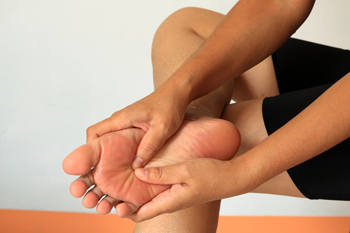 Severe pain and discomfort that is felt on the ball of the foot may be indicative of a condition that is referred to as Morton’s neuroma. It is often the result of nerves that become inflamed between the third and fourth toes, and is often known as a intermetatarsal neuroma. A major symptom of this condition is pain that is experienced on the bottom of the foot, possibly causing difficulty in walking. Many people may generally feel a tingling sensation in addition to feeling a burning sensitivity in the ball of the foot. A common reason for this condition to occur may be choosing to wear shoes that do not fit properly, and this may possibly cause the nerves in the foot to become irritated and inflamed. Additionally, performing certain activities may play a significant role in the formation of Morton’s neuroma. It’s advised to counsel with a podiatrist for proper treatments if you are afflicted with this ailment
Severe pain and discomfort that is felt on the ball of the foot may be indicative of a condition that is referred to as Morton’s neuroma. It is often the result of nerves that become inflamed between the third and fourth toes, and is often known as a intermetatarsal neuroma. A major symptom of this condition is pain that is experienced on the bottom of the foot, possibly causing difficulty in walking. Many people may generally feel a tingling sensation in addition to feeling a burning sensitivity in the ball of the foot. A common reason for this condition to occur may be choosing to wear shoes that do not fit properly, and this may possibly cause the nerves in the foot to become irritated and inflamed. Additionally, performing certain activities may play a significant role in the formation of Morton’s neuroma. It’s advised to counsel with a podiatrist for proper treatments if you are afflicted with this ailment
Morton’s neuroma is a very uncomfortable condition to live with. If you think you have Morton’s neuroma, contact Brent Harwood, DPM of Southeast Podiatry. Our doctor will attend to all of your foot care needs and answer any of your related questions.
Morton’s Neuroma
Morton's neuroma is a painful foot condition that commonly affects the areas between the second and third or third and fourth toe, although other areas of the foot are also susceptible. Morton’s neuroma is caused by an inflamed nerve in the foot that is being squeezed and aggravated by surrounding bones.
What Increases the Chances of Having Morton’s Neuroma?
Morton’s neuroma is a very treatable condition. Orthotics and shoe inserts can often be used to alleviate the pain on the forefront of the feet. In more severe cases, corticosteroids can also be prescribed. In order to figure out the best treatment for your neuroma, it’s recommended to seek the care of a podiatrist who can diagnose your condition and provide different treatment options.
If you have any questions, please feel free to contact one of our offices located in Fairhope, Brewton, and Atmore, AL . We offer the newest diagnostic and treatment technologies for all your foot care needs.
Read more about Morton's Neuroma Hyperhidrosis is a medical condition that causes the body to sweat excessively. Common areas that are affected by this condition include the hands, feet, and underarms. The proper term for hyperhidrosis that only occurs on the feet is plantar hyperhidrosis. Although the condition isn’t life threatening, it can cause embarrassment and distress for those who deal with it. Each foot contains approximately 250,000 eccrine sweat glands that are responsible for producing half a pint of sweat each day. People with plantar hyperhidrosis usually have to change their socks several times per day. Although the exact cause of the condition is unknown, some doctors believe it is caused by overactivity of the sympathetic nerve. Others, however, believe hyperhidrosis is solely a genetic condition. Hyperhidrosis is a treatable condition, and if you are looking to explore your treatment options, you should speak with your podiatrist today.
Hyperhidrosis is a medical condition that causes the body to sweat excessively. Common areas that are affected by this condition include the hands, feet, and underarms. The proper term for hyperhidrosis that only occurs on the feet is plantar hyperhidrosis. Although the condition isn’t life threatening, it can cause embarrassment and distress for those who deal with it. Each foot contains approximately 250,000 eccrine sweat glands that are responsible for producing half a pint of sweat each day. People with plantar hyperhidrosis usually have to change their socks several times per day. Although the exact cause of the condition is unknown, some doctors believe it is caused by overactivity of the sympathetic nerve. Others, however, believe hyperhidrosis is solely a genetic condition. Hyperhidrosis is a treatable condition, and if you are looking to explore your treatment options, you should speak with your podiatrist today.
If you are suffering from hyperhidrosis contact Brent Harwood, DPM of Southeast Podiatry. Our doctor can provide the care you need to attend to all of your foot care needs.
Hyperhidrosis of the Feet
Hyperhidrosis is a rare disorder that can cause people to have excessive sweating of their feet. This can usually occur all on its own without rigorous activity involved. People who suffer from hyperhidrosis may also experience sweaty palms.
Although it is said that sweating is a healthy process meant to cool down the body temperature and to maintain a proper internal temperature, hyperhidrosis may prove to be a huge hindrance on a person’s everyday life.
Plantar hyperhidrosis is considered to be the main form of hyperhidrosis. Secondary hyperhidrosis can refer to sweating that occurs in areas other than the feet or hands and armpits. Often this may be a sign of it being related to another medical condition such as menopause, hyperthyroidism and even Parkinson’s disease.
In order to alleviate this condition, it is important to see your doctor so that they may prescribe the necessary medications so that you can begin to live a normal life again. If this is left untreated, it is said that it will persist throughout an individual’s life.
A last resort approach would be surgery, but it is best to speak with your doctor to find out what may be the best treatment for you.
If you have any questions please feel free to contact one of our offices located in Fairhope, Brewton, and Atmore, AL . We offer the newest diagnostic and treatment technologies for all your foot care needs.
Read more about Hyperhidrosis of the Feet